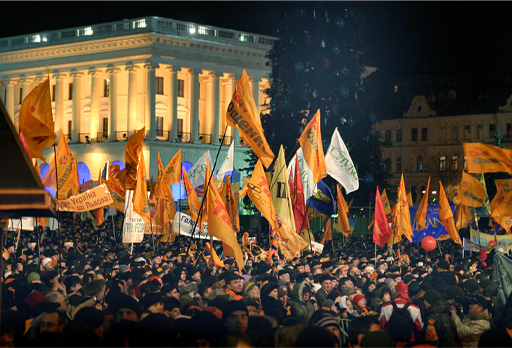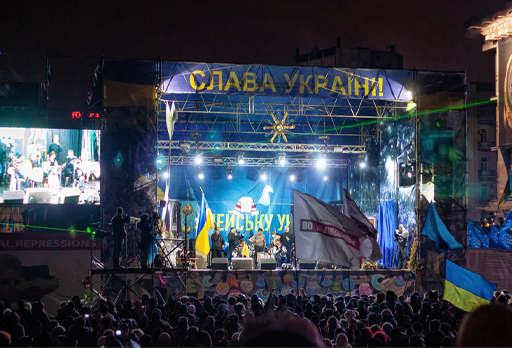4.1 Ukraine history: independence to invasion
Ukraine gained independence from the Soviet Union in 1991. At the end of nineteen eighties, the Soviet Union went through a liberalisation process known as ‘perestroika’. The Soviet economy and indeed the political system itself was on the brink of collapse. In Ukraine, this was the time when scale of Stalin’s terror and of the whole Soviet period was revealed. Ukrainians started speaking publicly about the Holodomor (Great Famine); biographies and works of previously forbidden Ukrainian authors, executed by Soviet regime, were published, although the Soviet government was still trying to hide the truth about the Chornobyl nuclear disaster (1986).
Questions were raised about the future of Ukraine. Many non-governmental organisations and political movements arose at that time. On 24 August 1991, the Ukrainian Parliament (the Supreme Council of the Ukrainian Soviet Socialist Republic at that time) adopted the Act of Declaration of Independence of Ukraine. On 1 December 1991, Ukrainians supported this document by voting on a referendum in which 90.32% of voters said ‘yes’ to an independent Ukraine.
Establishing democracy in the shadow of Putin’s Russia has not been easy. In 2004, peaceful mass protests throughout Ukraine, known as the Orange Revolution, resulted in the election of a pro-European president.
There were further widespread protests in 2014, when the government abruptly decided not to implement an association agreement with the European Union and instead to move closer to Russia. This was the EuroMaidan movement. In Kyiv, protesters set up a peaceful and well-organised camp with communal facilities and stages for cultural events. Despite police brutality which caused over a hundred deaths, the protests led to the removal of the pro-Russian president and prime minister.
The other very serious consequence of Euromaidan was beginning of open Russian intervention. In 2014, Russia annexed the Crimean Peninsula and started the war in Luhansk and Donetsk regions of Ukraine. A new stage of Russia’s war in Ukraine started on 24 February 2022. Its aims are the occupation of Ukraine and suppression of its independence.


